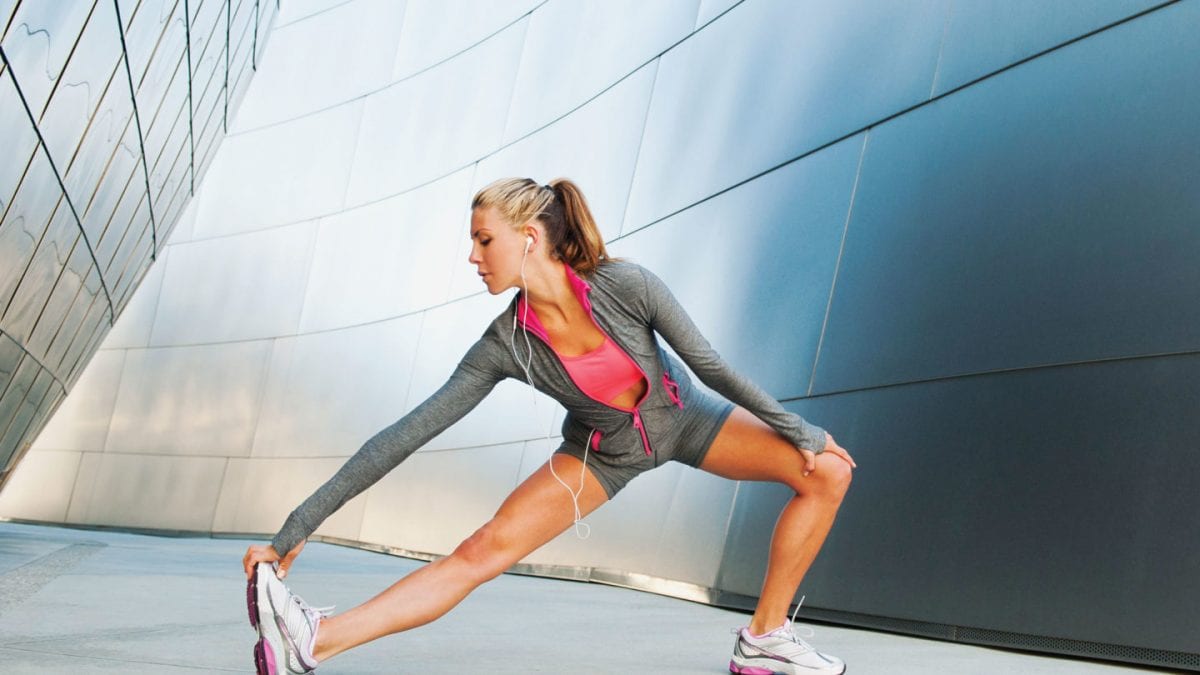I often hear the same questions from my clients, “what should I be stretching?”, and, “how do I stretch?” I try to keep my answers as brief as possible, but sometimes it’s not that simple. For example, there are cases where someone feels “tight” but there is joint instability and the individual requires stability and strengthening exercises. Or perhaps the muscle tightness sensation is due to nerve impingement. In cases where your symptoms don’t disappear from stretching or self-myofascial release, it’s time to visit your trusted physiotherapist, chiropractor and/or massage therapist.
For the sake of this article, let’s say we’re dealing with general tightness in healthy populations that can be alleviated by a decent stretch routine. To begin, let’s first define the term flexibility and mobility.
Flexibility: the range of motion of a specific joint and more specifically, the ability of the muscle to lengthen or stretch.
Mobility: refers to how freely a joint can move through its range of motion. Flexibility, tissue health, and how well the nervous system controls the joint all fall under this umbrella.
Flexibility Training
Just like anything else, if you want to see positive changes you need to train it by changing your habits. If you never stretch, start a training plan. Yes, stretching is boring, but if you have a plan, you’re more likely to be consistent and follow through. There’s no need to overcomplicate it, especially when first beginning. To help you get started here are a few suggestions and tips.
Design Your Training Schedule
- How many days a week can you commit?
- How long will each session be?
- Will you designate a session for lower body and another for upper body or will every session deal with the entire body?
Set Attainable Goals
Being realistic about your goals will help lead you to success. If you’re a person that can’t touch your toes, maybe doing the splits might be a goal for the future. Try setting goals that are specific to your sport. Maybe your goal is simply to maintain and help with recovery from sport? What measures will you use to gauge your progress?
Design Your Routine
I like planning a sequence routine that flows easily from one stretch to another. I also plan sequences that starts with easier stretches and slowly ease my way into the more intense ones. For example, when I focus on the lower body (low back and down) I start my stretch routine lying on my back and doing stretches with my knee bent and then progress to straight leg stretches. A plan example in the supine (on back) position can be as follows:
- Low back stretches
- Bent knee stretches – knee to chest (same side), knee out to side
- Gluteal stretches
- Straight leg hamstring stretches – using stretching strap
- Straight leg adductor stretches – using stretching strap
Warm Up Your Joints and Tissues First
Self-myofascial release using a foam roller and/or a tennis ball can be good to help prepare your body for the upcoming stretch practice. Of course, if you are stretching post-workout you can omit this section. I like to warm up my spine, hips and feet before starting my stretches. I find that a stiff spine makes it difficult to breathe deeply and get into the stretches comfortably. Here are a couple of examples:
- Cat/cow yoga pose
- Quadruped thoracic rotations
- Hip windshield wiper exercise
- Roll out the feet
Use Props When Needed
Invest in stretching tools like a yoga block, stretching strap, foam roller, tennis ball or lacrosse ball, and a bolster. Don’t strain yourself trying to get into position. The idea is to be able to relax in the position and these tools will help ease discomfort.
Stretching Variables
- Change the angle of your stretch – we don’t need to stretch in a linear fashion. Change the angle to get that right spot. For example – doing a straight leg hamstring stretch play with turning your toes in and out to get different directions.
- Breathing – this is very important. Deep belly breaths help to promote relaxation and are great for recovery, post workout stretches, and faster breathing is good when you are warming up to workout. If you catch yourself holding your breath, maybe the stretch is too intense, and you need to back it off a bit.
- Stretch duration – I believe in leaving that up to the individual, but I always say that you want to stay in the stretch long enough to impact change. If your right side is tighter than your left, logically you would spend more time on your right.
With this information I hope you are off to a great start in your flexibility training.
Yvonne Sanche is a registered massage therapist, and level 3 fascial stretch therapist. She owns and operates St. Albert Sports Recovery.








